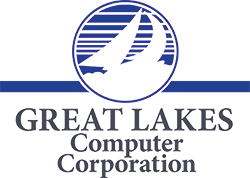SMB’s realize the cost savings of Managed IT Solutions
 In this tough economic climate, small- and medium-sized businesses need to take advantage of all the cost savings they can find. Sometimes this involves difficult choices, but not when it comes to the issue of managed services. Unlike some cost-cutting moves, adopting a managed services model for IT support can actually improve quality even as it reduces expenditures.
In this tough economic climate, small- and medium-sized businesses need to take advantage of all the cost savings they can find. Sometimes this involves difficult choices, but not when it comes to the issue of managed services. Unlike some cost-cutting moves, adopting a managed services model for IT support can actually improve quality even as it reduces expenditures.
Managed IT services, however, are a new enough philosophy that the approach may need some explanation. In a managed services model, IT solutions are delivered remotely using the internet as a powerful conduit that allows a provider to monitor hardware and implement a variety of software adjustments and fixes without the need for an on-site visit.
Economies of scale
The basic reason for the costs savings that are inherent in a managed services model involve economies of scale. Each managed services provider will typically furnish high-quality monitoring, maintenance, and IT support services to several companies, using a unified management and software base to assist all of them. This lowers the provider’s costs dramatically, creating savings that can then be passed along to all of the SMBs receiving managed IT services.
Compare this to the more traditional paradigm in which each SMB must employ in-house IT staff. For many SMBs, this approach rules out any economies of scale. In fact, the needs of the company may not even be extensive enough to require a single full-time employee, but since highly trained IT experts will rarely be willing to accept a part-time position, a full-time job must be provided regardless.
SMBs face particular challenges
This is because the alternatives are generally unacceptable; an intern still in training may accept part-time work, but may not have the expertise needed to truly deliver the top-notch IT services that can be the lifeblood of a small company. Nor is calling in an IT professional and paying him or her by the hour a good solution since it means an ad-hoc approach to an essential business function capable of stalling workflow. When an IT disaster strikes, there may be a considerable delay before on-call staff can work the SMB in question into their schedule. Even after that, such staff may need hours or days before they can get a handle on the organization of the SMB’s network and systems – a prerequisite for being able to identify and resolve complex IT issues.
A managed services provider, in contrast, will be thoroughly familiar with the system experiencing difficulty since they administer it on a continuous basis. Indeed, with managed services, IT problems can often be caught before they snowball into major issues since continuous monitoring is a key element of the approach, allowing a managed service provider to detect and even correct problems before they interfere with workflow at all.
Download the Case Study for ALL PRO Freight
Learn how Great Lakes Computer Corp was able to help ALL PRO Freight Systems increase customer service support while decreasing the time it took to solve customer problems.
